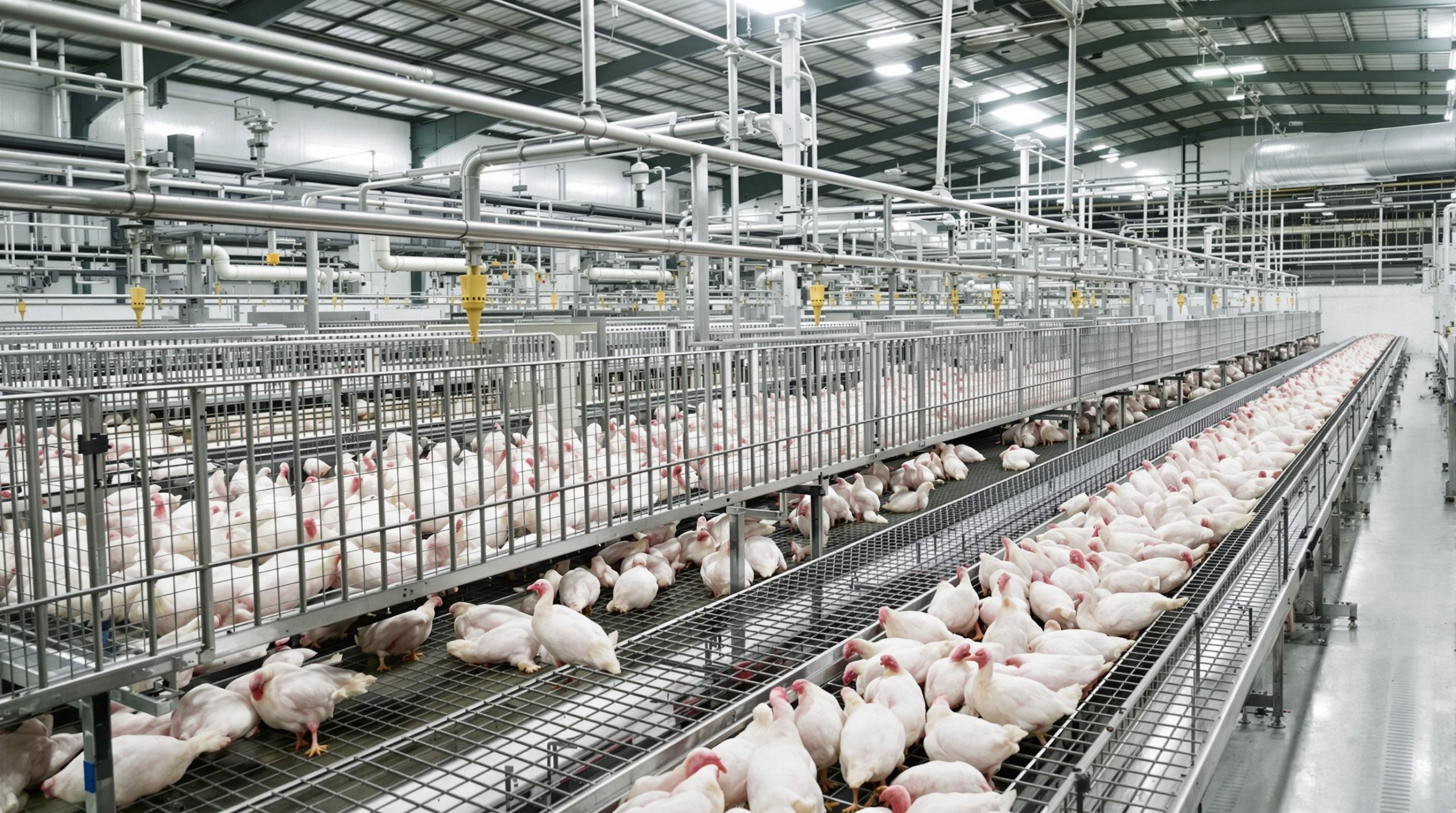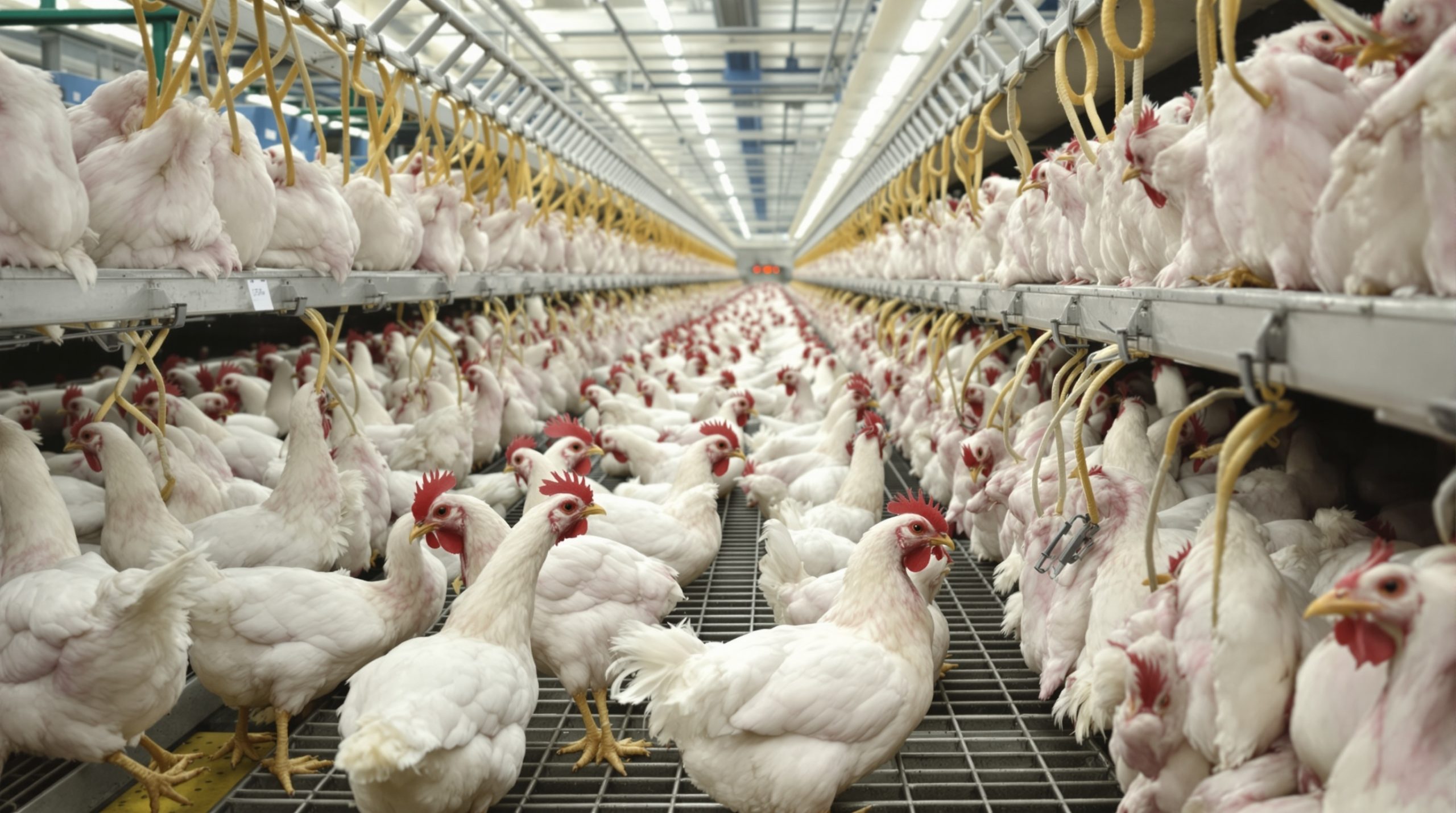The global poultry processing equipment market is experiencing an unprecedented surge, with experts forecasting a remarkable journey from $4.1 billion in 2023 to a substantial $7.71 billion by 2034. This impressive trajectory represents a compound annual growth rate (CAGR) of approximately 6.5%, signaling transformative changes across the poultry processing landscape. As consumer demand for processed poultry products continues to escalate worldwide, manufacturers and processors are increasingly investing in advanced equipment solutions that enhance efficiency, ensure food safety, and accommodate the growing preference for convenient, ready-to-cook poultry options.
Current State of the Global Poultry Processing Equipment Market
The poultry processing equipment sector currently stands at a pivotal juncture of technological advancement and market expansion. With a valuation of roughly $4.1 billion in 2023, the industry has already demonstrated significant growth momentum driven by multiple interconnected factors. The market encompasses a diverse range of equipment including slaughtering machinery, defeathering systems, evisceration equipment, cutting and deboning machines, marinating systems, and packaging solutions.
Regional distribution shows North America and Europe maintaining strong market positions, while Asia-Pacific represents the fastest-growing region due to rapidly increasing poultry consumption in populous countries like China and India. Leading market players including Marel, John Bean Technologies Corporation, Baader Group, and Meyn Food Processing Technology B.V. continue to dominate through strategic innovations and market expansions.
Key Drivers Fueling the Poultry Processing Equipment Market Growth
Increasing Global Demand for Processed Poultry Products
The foundation of this market’s growth lies in the steadily increasing global consumption of poultry products. Chicken, turkey, and other poultry meats have become preferred protein sources for consumers worldwide due to their relatively lower cost, nutritional benefits, and versatility in culinary applications. This heightened demand has naturally translated into expanded processing requirements, creating a robust market for specialized equipment.
Statistics from the United Nations Food and Agriculture Organization (FAO) indicate that global poultry meat production has increased by over 20% in the past decade, with projections suggesting continued growth through 2034. This sustained demand necessitates corresponding investments in processing capabilities to meet consumer expectations.
Technological Advancements in Processing Equipment
The poultry processing equipment sector is undergoing a significant technological transformation, with automation and digitalization emerging as central themes. Modern processing equipment increasingly incorporates advanced features such as:
- AI-powered visual inspection systems for quality control
- Robotics for precision cutting and handling
- IoT connectivity for real-time monitoring and predictive maintenance
- High-pressure processing technologies for enhanced food safety
- Water and energy conservation features for sustainability
These technological innovations not only improve processing efficiency but also address critical industry challenges related to labor shortages, food safety compliance, and operational cost management. Manufacturers adopting these advanced systems can achieve higher throughput rates while maintaining product quality and consistency.
Growing Focus on Food Safety and Regulatory Compliance
Stringent food safety regulations across global markets continue to shape the poultry processing equipment landscape. Regulatory bodies including the FDA, USDA, and their international counterparts have established increasingly rigorous standards for processing environments, creating demand for equipment that facilitates compliance.
Modern processing equipment now features design elements specifically addressing pathogen reduction, cross-contamination prevention, and traceability requirements. These include antimicrobial surfaces, self-cleaning capabilities, and integrated tracking systems that document critical control points throughout the processing journey.
Segment Analysis: High-Growth Equipment Categories
Within the broader poultry processing equipment market, certain segments are demonstrating particularly strong growth potential that will contribute significantly to the projected $7.71 billion valuation by 2034.
Automated Cutting and Deboning Systems
Perhaps the most technologically advanced segment, automated cutting and deboning systems are revolutionizing how processors handle the most labor-intensive aspects of poultry processing. These systems utilize computer vision, machine learning algorithms, and precision robotics to achieve cutting accuracy that rivals skilled human operators while dramatically increasing throughput volumes.
The market for these systems is projected to grow at an above-average CAGR of approximately 7.2% through 2034, driven by acute labor shortages in processing facilities and the significant cost savings these systems deliver through improved yield and reduced waste.
Marinating and Injection Equipment
As consumer preference for value-added, ready-to-cook poultry products continues to rise, equipment for marinating, seasoning, and flavor injection is experiencing robust demand growth. Modern systems in this category offer precise control over ingredient application, ensuring consistent flavor profiles and extended shelf life while minimizing marinade waste.
This segment is particularly benefiting from the expanding quick-service restaurant sector and retail demand for convenient meal solutions, with a projected CAGR of approximately 6.8% through 2034.
Advanced Packaging Systems
Packaging represents the final critical step in the poultry processing value chain and is experiencing significant innovation. Modified atmosphere packaging (MAP), vacuum skin packaging, and intelligent packaging solutions that incorporate freshness indicators or QR codes for traceability are driving growth in this equipment segment.
With consumers increasingly valuing extended shelf life, reduced food waste, and transparent product information, investment in advanced packaging equipment is expected to grow substantially, contributing significantly to the overall market expansion.
Regional Market Dynamics and Growth Opportunities
Asia-Pacific: The Fastest-Growing Regional Market
The Asia-Pacific region represents the most dynamic growth opportunity in the global poultry processing equipment market. With rapidly increasing meat consumption across China, India, Vietnam, Indonesia, and other developing economies, processing capacity expansion is occurring at an unprecedented pace. Local and international equipment manufacturers are targeting this region with solutions adapted to local production scales and regulatory frameworks.
Investments in modern processing facilities across the region are expected to drive equipment demand at a regional CAGR exceeding 8% through 2034, making Asia-Pacific the primary growth engine for the global market.
North America: Technology-Driven Market Transformation
While already a mature market, North America continues to demonstrate significant growth potential driven primarily by technology upgrades and automation initiatives. With labor challenges becoming increasingly acute in the U.S. and Canadian processing sectors, investments in advanced processing equipment represent a strategic priority.
The region is particularly focused on implementing Industry 4.0 technologies within processing facilities, creating substantial opportunities for equipment manufacturers offering integrated digital solutions.
Sustainability: A Defining Market Trend
Environmental sustainability has emerged as a critical consideration reshaping the poultry processing equipment market. Processors are increasingly prioritizing equipment that minimizes resource consumption and environmental impact while maintaining operational efficiency.
Key sustainability features driving equipment selection include:
- Water recycling and conservation systems
- Energy-efficient designs with heat recovery capabilities
- Waste stream reduction and by-product utilization features
- Reduced cleaning chemical requirements
- Compact designs that minimize facility footprint
Equipment manufacturers emphasizing these sustainability advantages are gaining competitive advantages, particularly in markets with stringent environmental regulations or high utility costs. This focus on sustainability will continue to influence market development through 2034 and beyond.
Challenges and Restraints in Market Growth
Despite the overwhelmingly positive growth outlook, several challenges could potentially impact the trajectory toward the projected $7.71 billion market valuation by 2034.
High Initial Investment Requirements
Advanced poultry processing equipment represents a significant capital investment, particularly for smaller processors operating with limited financial resources. This cost barrier can slow adoption rates, especially in developing markets where access to capital may be constrained.
Equipment manufacturers addressing this challenge through flexible financing options, modular system designs, and clear ROI demonstrations will gain market share advantages, particularly in emerging economies.
Technical Expertise and Maintenance Considerations
The increasing technological sophistication of processing equipment creates corresponding requirements for technical expertise in operation and maintenance. Processors in regions with limited access to skilled technical personnel may hesitate to invest in advanced systems due to concerns about operational disruptions and maintenance challenges.
This challenge creates opportunities for equipment providers offering comprehensive training programs, remote diagnostics capabilities, and simplified user interfaces designed for operators with varying technical backgrounds.
Conclusion: Market Outlook Through 2034
The poultry processing equipment market’s journey toward a $7.71 billion valuation by 2034 represents more than simple numerical growth—it signals a fundamental transformation in how poultry products are produced and processed globally. As technology continues advancing, consumer preferences evolving, and regulatory requirements tightening, the equipment landscape will increasingly favor sophisticated, integrated systems that balance efficiency, food safety, and sustainability.
For industry stakeholders—from equipment manufacturers to poultry processors—this growth trajectory presents substantial opportunities for those able to navigate the evolving market dynamics with innovative solutions aligned with emerging needs. The next decade will undoubtedly bring further technological breakthroughs, market consolidation, and regional shifts that will continue reshaping this essential component of the global food production system.



